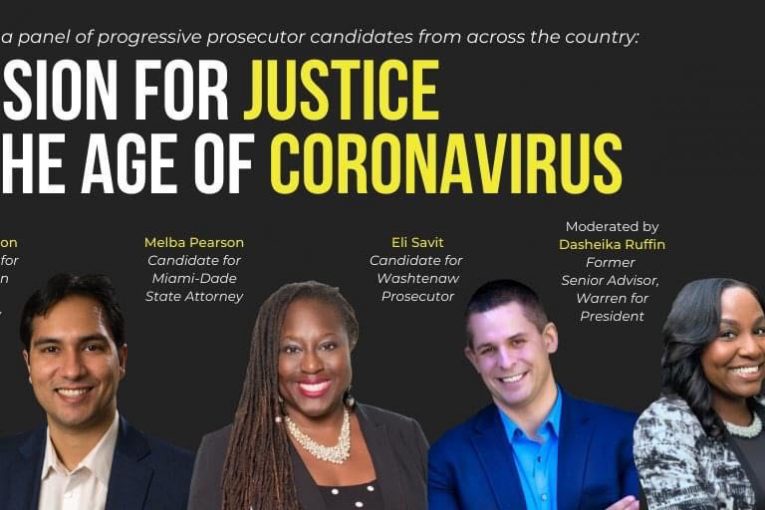
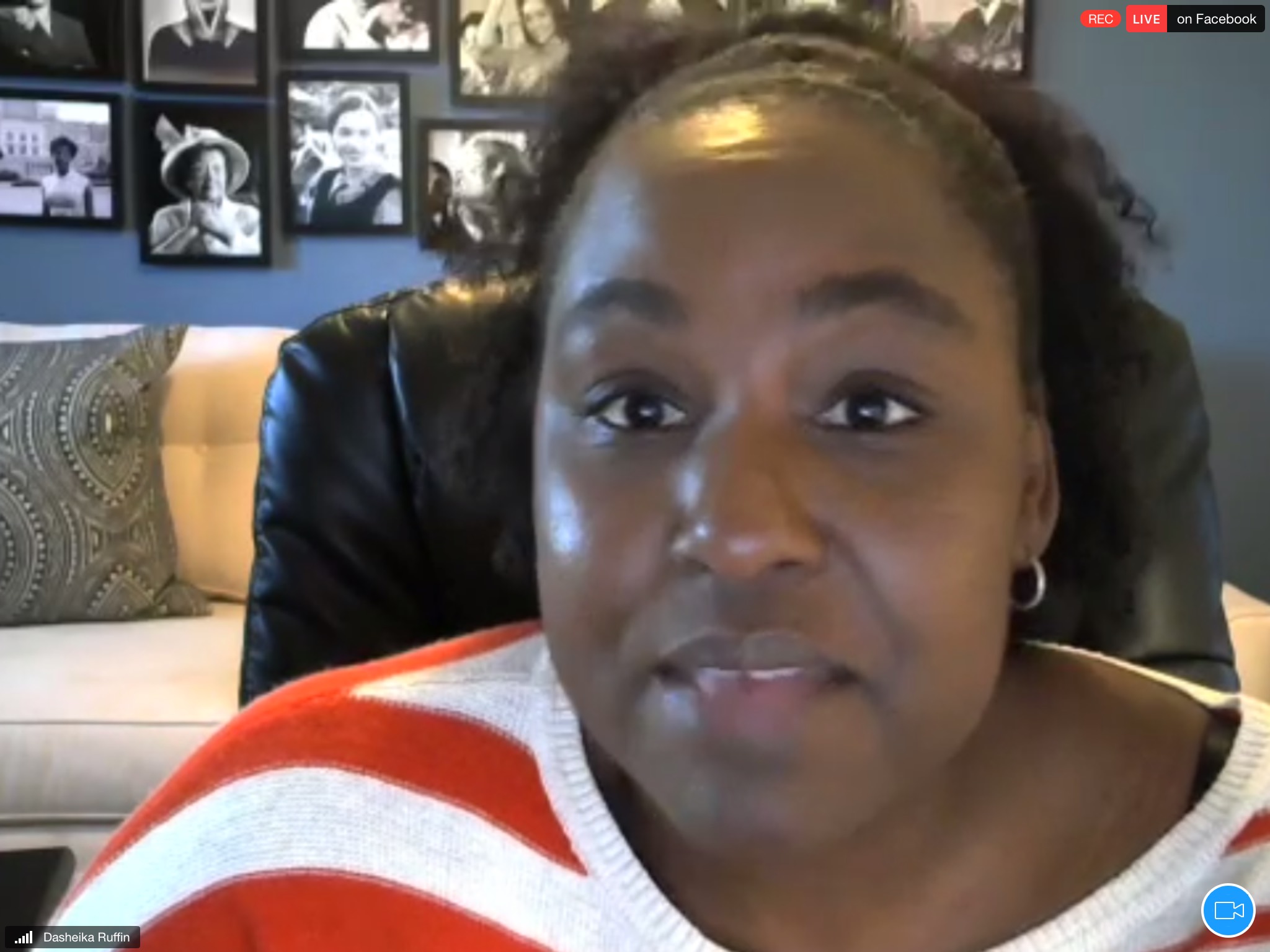
Can the end result of the global pandemic threat of COVID-19 be a fairer and more equitable justice system? That’s what prosecution candidates from across the country—Janos Marton from Manhattan, Melba Pearson from Miami-Dade, and Eli Savit from Michigan talked about in a panel discussion Wednesday, hosted by Dasheika Ruffin, a former Senior Advisor to Warren for President.
Janos Marton noted the story of a 10-year-old arrested in New York for selling candy on a NYC subway platform.
On the video that is making its rounds on Twitter, “you’ll see that as many as a dozen police officers surround the family… To put aside even the outrageous that a 10-year-old could be arrested at a moment like this, in a pandemic, for trying to make a few dollars.
“That was the worst incident,” he said, but there have been others where arrests are made for small quality-of-life crimes “which I find improper even under normal circumstance but certainly under the circumstances now shouldn’t be the priority of law enforcement.”
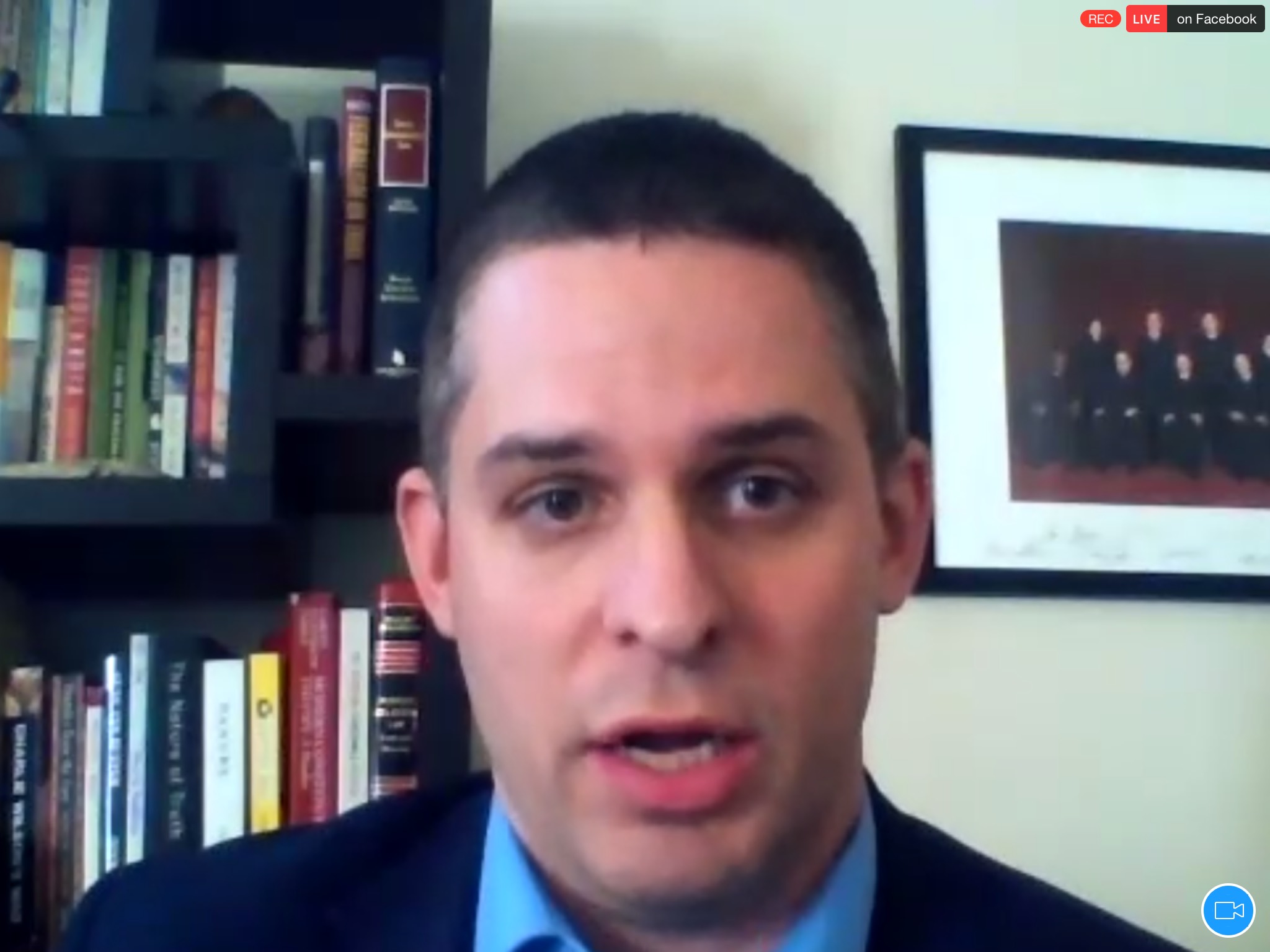
Eli Savit spoke to alternatives to incarceration.
“The coronavirus crisis has shown a light on a lot of the inequities in our society and a lot of the things that we are doing wrong,” the candidate for the Washtenaw County Prosecutor, which includes Ann Arbor, Michigan, explained. “I think we need to learn from this crisis.
“It is beyond the pale right now to arrest someone into a jail,” he said, “which is a petri dish for the virus, and to hold them for a small, low level, quality-of-life offense. A crime for which they don’t really pose a threat to the community.”
He suggested instead doing citations and appearance tickets for these lower level offenses.
“I’m hopeful that if any good can come out of this crisis, it’s that we can learn from this, we can recognize that what we’ve been told about what public safety demands for so many years is just not true,” he said. “We can start to build a fairer and more equitable justice system.”
One of the big problems is that putting people into custody exposes them to the virus. Rikers Island has seven times more cases per capita than even the city and state of NY, which is leading the nation in infections.
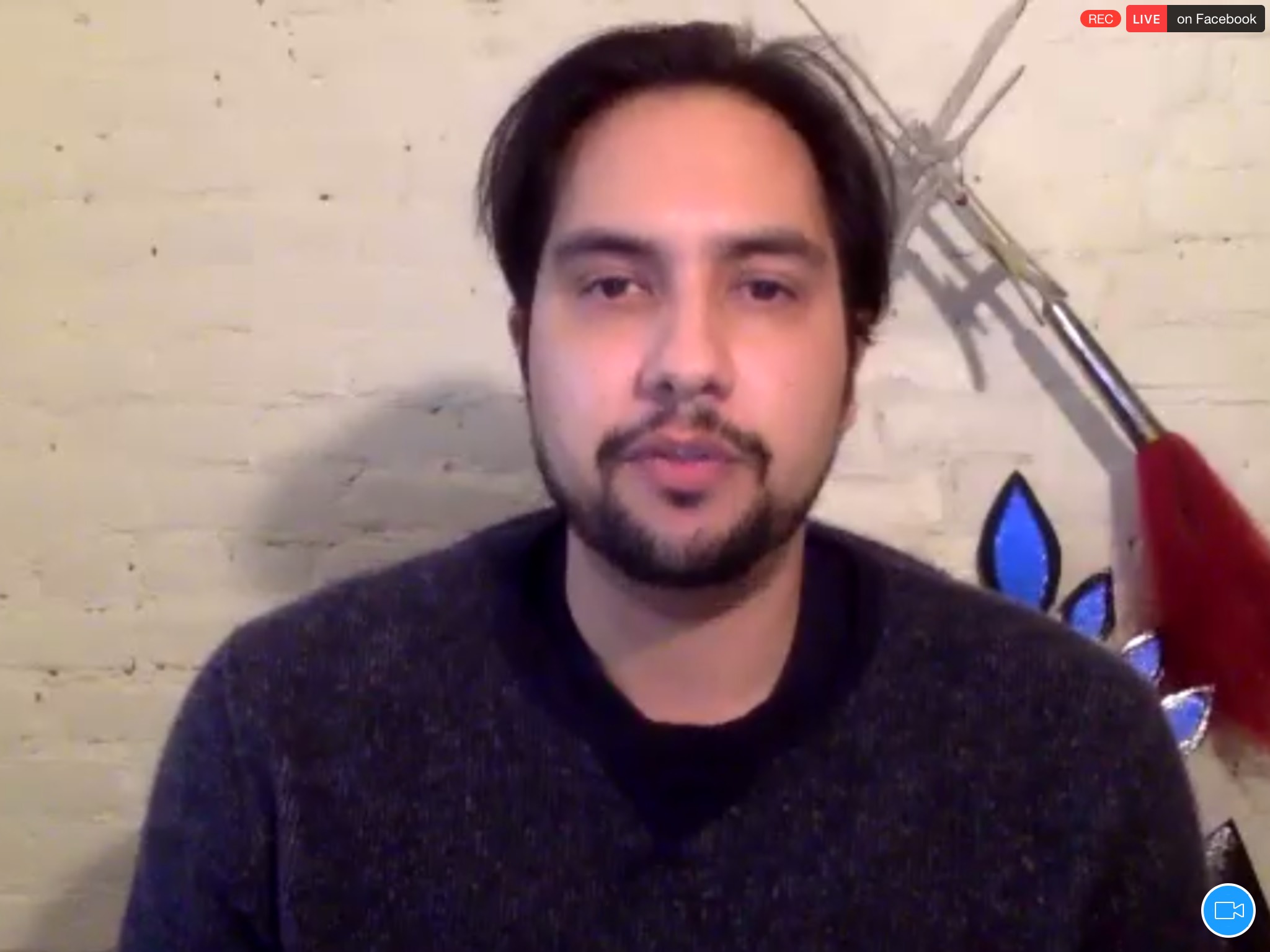
Dasheika Ruffin said, “If the pandemic continues at this pace, the entire local population in jails will be infected in a matter of weeks.”
Across the country, a key debate is who needs to be released from jails and prisons.
Janos Marton said, “We are just trying to implement what has been common sense for a long time.”
He pointed out that Rikers Island has been an “historically awful penal colony” just
 outside of the city on the water, hosting as many as 23,000 people a day in the early 1990s. The Close Rikers campaign began in 2016. It is now on a path towards closure.
outside of the city on the water, hosting as many as 23,000 people a day in the early 1990s. The Close Rikers campaign began in 2016. It is now on a path towards closure.
“For people to understand how hard it is to contain a virus in a jail,” he said, “Rikers Island is like a cruise ship boarding more passengers recklessly every single day.”
People are usually in jail for short amounts of time which, he said, “means you have 500 people coming onto Rikers every single day.” Anyone with health or medical experience saw this as a crisis.
While some of these people have committed violent and dangerous crimes, there are a lot of people with either low level offenses, mental health problems or some who have committed a technical violation of parole or probation.
For technical violations, these are not new crimes, but a violation of rules and terms of parole.
“In New York that means you can end up on Rikers Island,” Mr. Marton explained. Many of these now have no resource to get off Rikers.
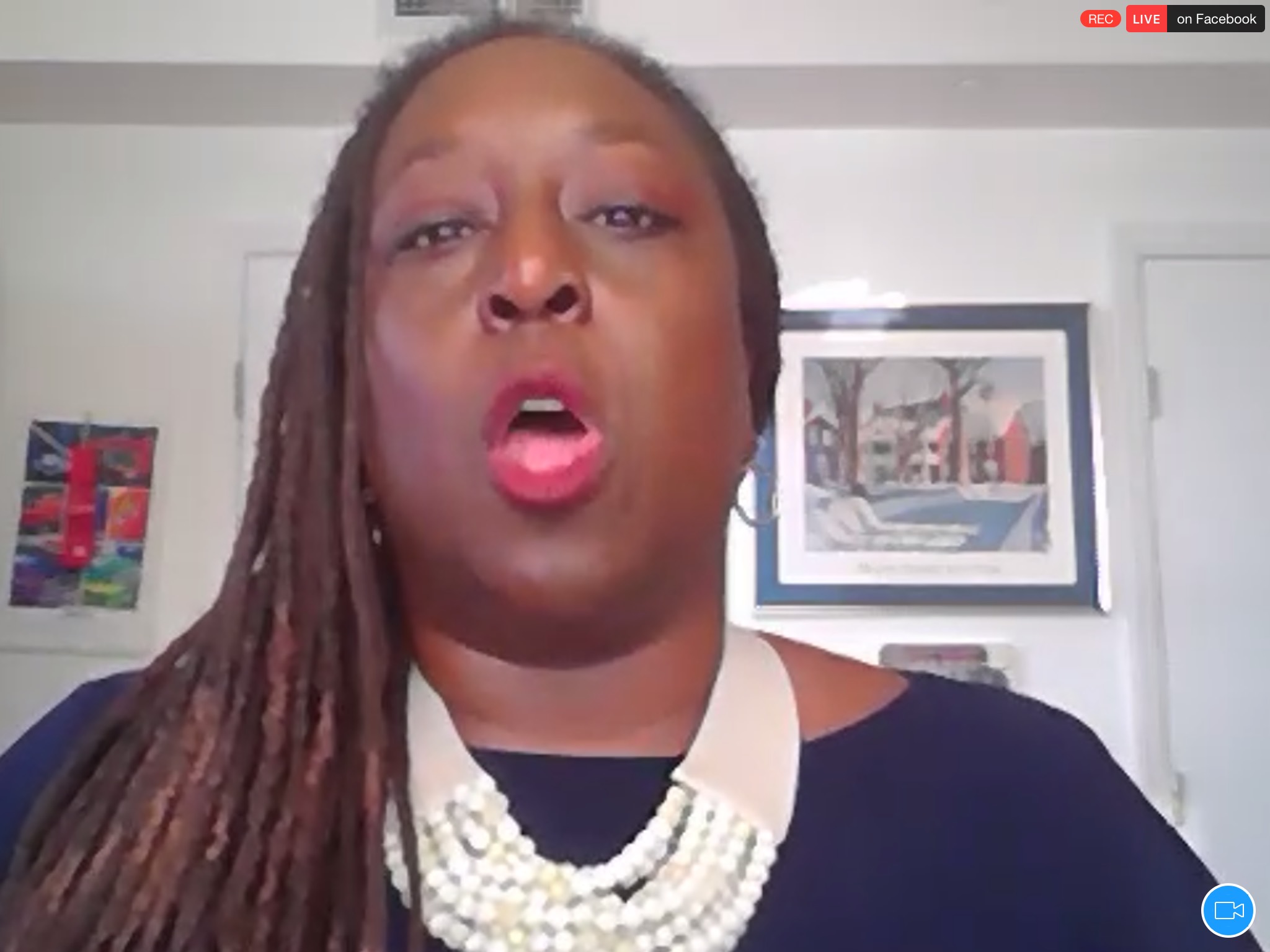
Melba Pearson said, “We’re facing similar challenges here in Miami.” She said that on any given day about 4000 people are in county jail, 3000 of those are there for pre-sentencing, “they are waiting for their cases to go to trial or take a plea.”
She said, “A majority of the people are there for non-violent offenses or violations of probation.”
She said that many of them have symptoms of the virus but are lying in open areas—coughing and hacking, still spreading the virus.
There has been tremendous pressure on the incumbent to reduce the population. Right now, she said, there has been a 13.5 percent reduction in the jail population, “but at the end of the day we know that more can be done” and she wants to see a 20 to 25 percent reduction like in other jurisdictions.
Eli Savit noted he is in a “jurisdiction that has done it well—at least with regards to jail.”
He said, “Our governor—and I give her all the credit in the world—took swift action and she invoked what’s called the jail overcrowding act,” which gave sheriff and local jurisdictions “authority to release people from jail.”
In his county, they moved swiftly, and “our jail is currently at under half capacity.” He said, “If you doubt that this works, look at Washtenaw County because we have yet to have a single confirmed case of coronavirus in our jail despite the fact that Michigan is one of the states hardest hit.
“This works, it saves lives,” he said.
Eli Savit added that they need to listen to the public health experts, who have recommended that we decarcerate our prisons.
What they are telling us right now, he said: “It is imperative that we decarcerate our prisons.”
He noted that in Michigan—unlike in the jail system, which he gave credit for dealing with the issue well—the virus is spreading rapidly.
“We need to focus on thinning the prison population as much as possible to allow for adequate social distance to happen,” he said. “That means we release people who do not pose an imminent threat to the community.
“We need to release the most vulnerable people in our prisons,” he said. Elderly prisons and those who are frail and sick. “Also people who are nearing the end of their sentences.
“You cannot make the case that you are more dangerous now than you would be in six weeks,” he said, but they could get the virus, die, or take up valuable resources in that time.
He agreed that “you shouldn’t empty out all of the prisons, 100 percent, there are people in prison who pose an imminent threat to people in society.” But, he said, “there are a lot of people in prison who don’t pose a threat.”
He noted that people in prison for parole violations—“that’s not a public safety threat right now.”
He argued that if they can “check the spread behind bars” it “keeps all of us safer” and that “decarcerating our prisons will stop the spread.”
Janos Marton added that “it raises fundamental questions about what’s broken about our current criminal justice system that a lot people… are reluctant to admit.
“What is the public safety reason to keep someone who is 70 years old in prison?” he said, noting a lot of studies that people’s public safety risk goes down significantly when they hit 40 years old.
“There are 170 clemency requests, sitting on the governor’s desk, who have done at least 30 years of prison time,” he said. “There is no public safety argument for 113 or 114 to be kept behind bars.”
The point was raised that there is a national movement to release nonviolent offenders, but the violent offenders are often left out of that discussion.
Melba Pearson said the tough part of being a prosecutor is making sure you balance the safety of the community and being just and equitable in how the law is applied.
The problem you get is one person gets probation for a serious offense, like the guy at Stanford, but people of color in similar positions end up with 15-year sentences. That inequity is a problem.
“That sort of inequity is very problematic within the system,” she said. People respond that sentences need to be longer. She argued on the one hand we need to hold people accountable for their actions, but, at the same time, “we need to promote more restorative rehabilitative options.”
She argued they needed to be equitable with these options and not give “people with a certain complexion or a certain wealth base a lighter sentence and then giving a hammer to people who are poor. We need a middle ground… so everyone is treated fairly.”
Janos Marton later added, “It’s hard to argue that jail or prison is ever an answer to a problem. We use jail and prison for a whole lot of our problems—people who have addictions, people who have trauma, for people who have mental health issues.”
He said for the movement, “for a whole lot of people, there are active better choices out there than jail and prison.”
Mr. Marton added that he does not subscribe to this non-violent or violent dichotomy. Instead, he argued, “We need to get to the core of why a person is causing harm and getting that harm to stop.”
Eli Savit argued that the criminal justice system is “arbitrary” and that it is “impervious to study or research or any sort of introspection about whether what we are doing is actually working.”
He said, “We do things in the criminal justice system without any sort of data or theory to back it up.
“Jail and prison is not rehabilitative,” he said. “It serves the functions of separating someone who is a danger to society from the community—there’s a place for that for some offenses.”
He noted that “people age out of crime.” He noted about elderly prisoners, that “we know that they’re not likely to offend again. That’s true regardless of what their initial offense was.”
Even among juveniles, “we know that they’re fundamentally not the same person when they are 16 years old as they are at age 32.”
He said, “We are holding people for really lengthy sentences that don’t need to be there.” He noted also that that is costing us a lot of money.
—David M. Greenwald reporting
To sign up for our new newsletter – Everyday Injustice – https://tinyurl.com/yyultcf9






